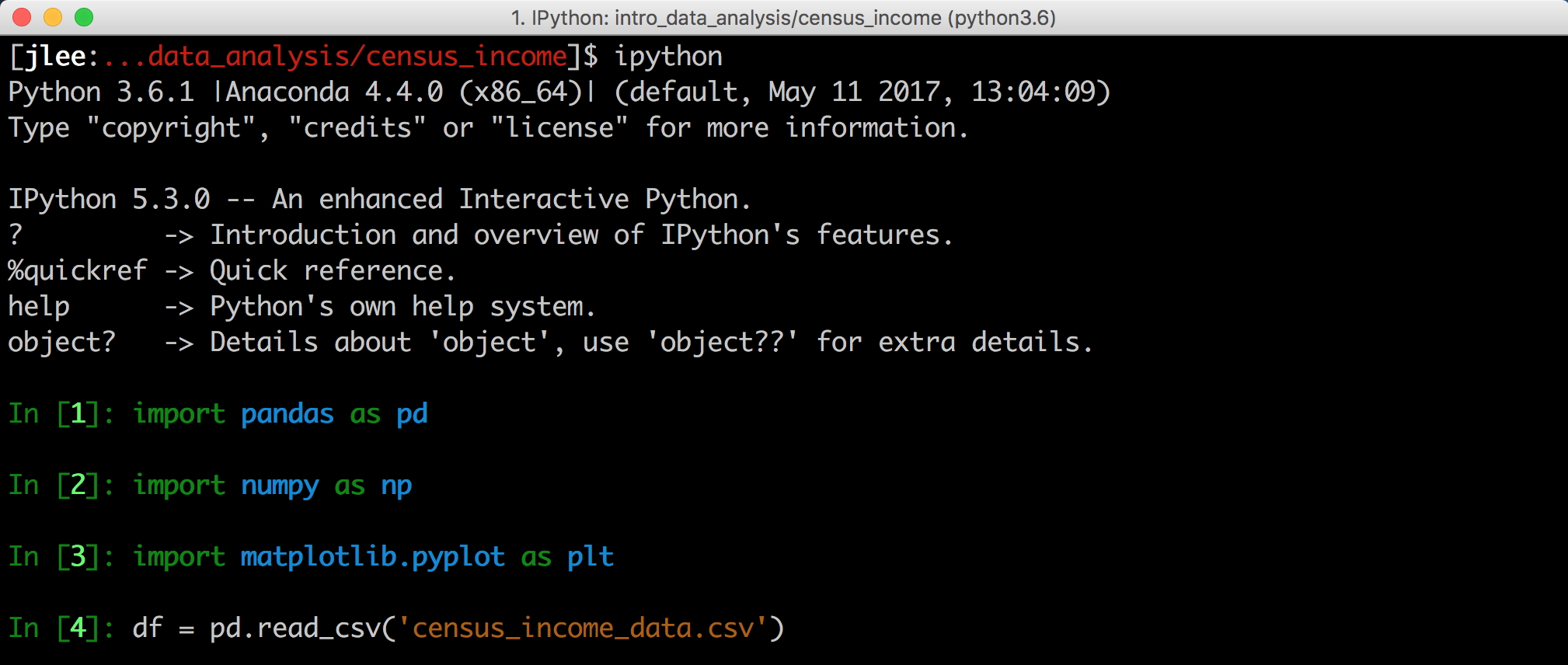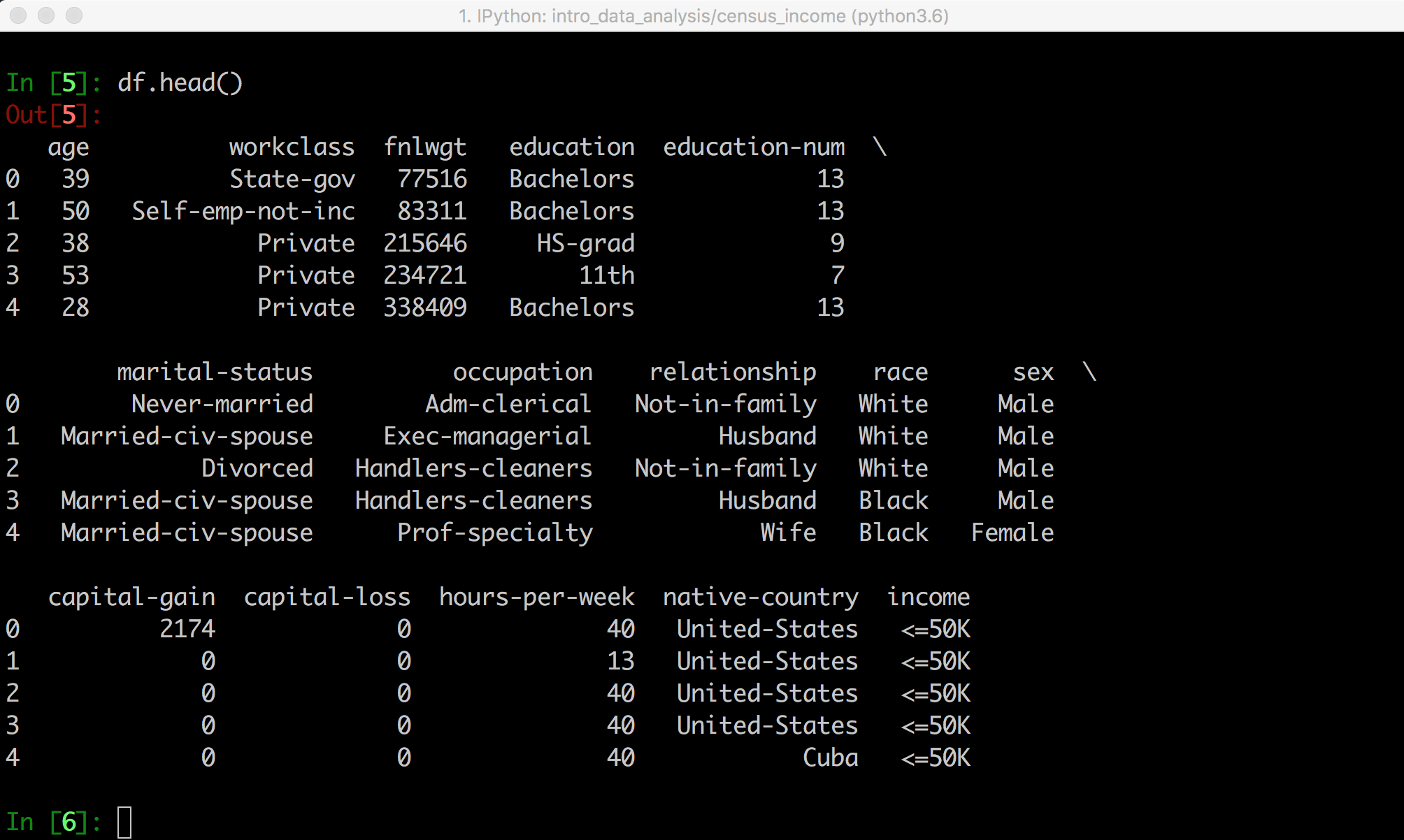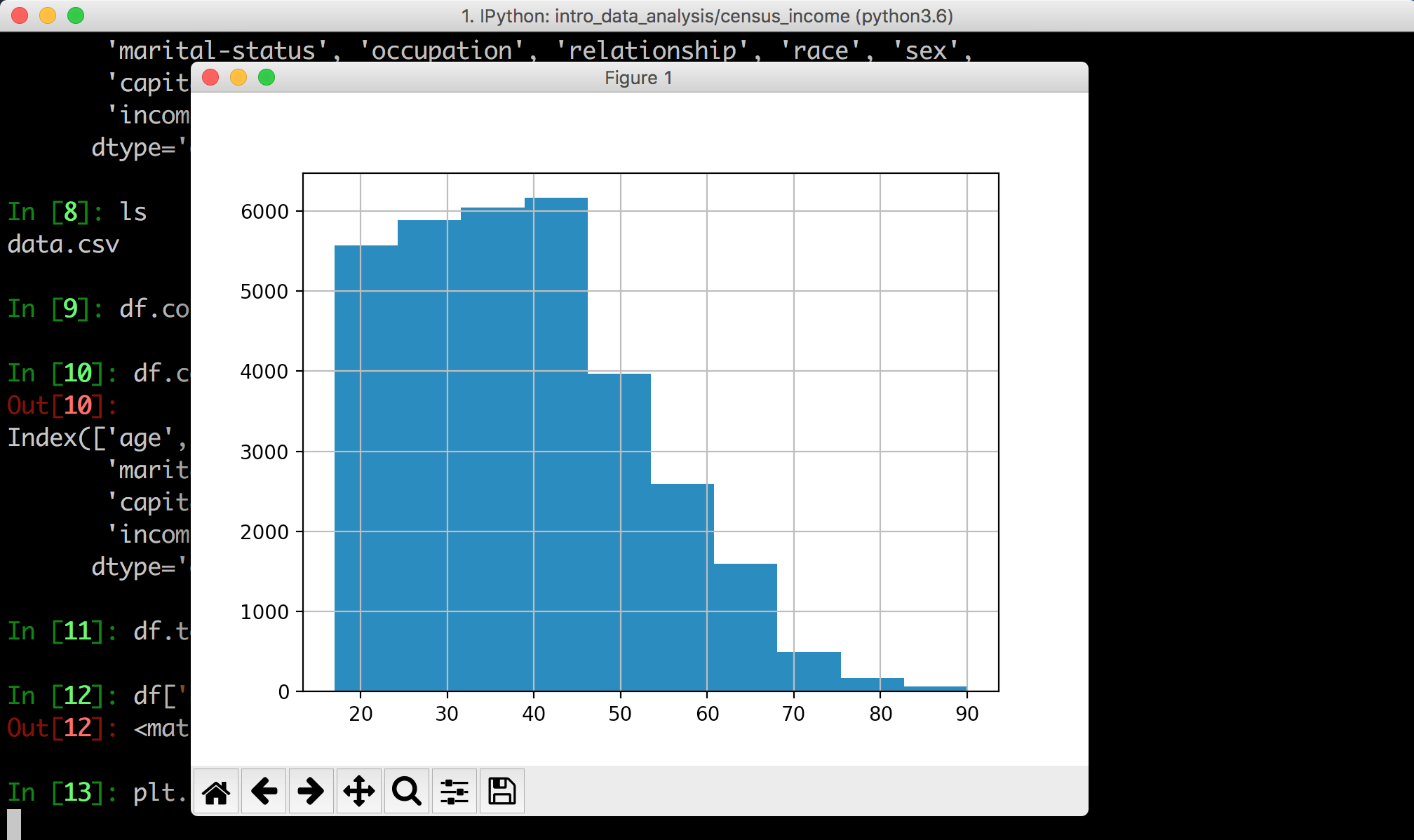02. Analyzing with IPython
About IPython
IPython is actually what provides the interactive Python kernel we use in Jupyter notebook. And in fact, we can use IPython outside of Jupyter notebook with its command line interface in our terminal. This is very convenient and awesome for quick modifications, exploration, experimentation, and even running Python scripts!
You can read more about how IPython and Jupyter notebook work here . You can also find the official IPython documentation here .
To use IPython's command line interface, just type in
ipython
in your terminal. This should work if you already have Jupyter notebook installed. Like we always did in Jupyter notebook, let's import our packages and load in a dataset.

Even though we are in the terminal, we can still view datasets the same way with
head
.

And although you're in IPython, you can still use command line commands! So we can do things like checking our directory for other files and renaming them.

Using IPython in your terminal can be very convenient for quick changes to your files. For example, if you wanted to change the column names in a dataset before sending off a csv file.

Visualizations here are also the same, except there's no
% matplotlib inline
since that's specific to Jupyter notebook. To have our visualizations show, we need to call
plt.show()
.

Entering that will open the plot in another window like this.

One thing I do in IPython all the time is test or experiment with different functions, algorithms, or just Python. Sometimes, I even do a quick check here to remember how a function works before reading documentation. (Although reading documentation is a VERY good idea!)

This was just a quick overview to expose you to a different tool you can use to practice your new Python for data analysis skills. If you'd like to learn more, make sure to check out the documentation linked above!